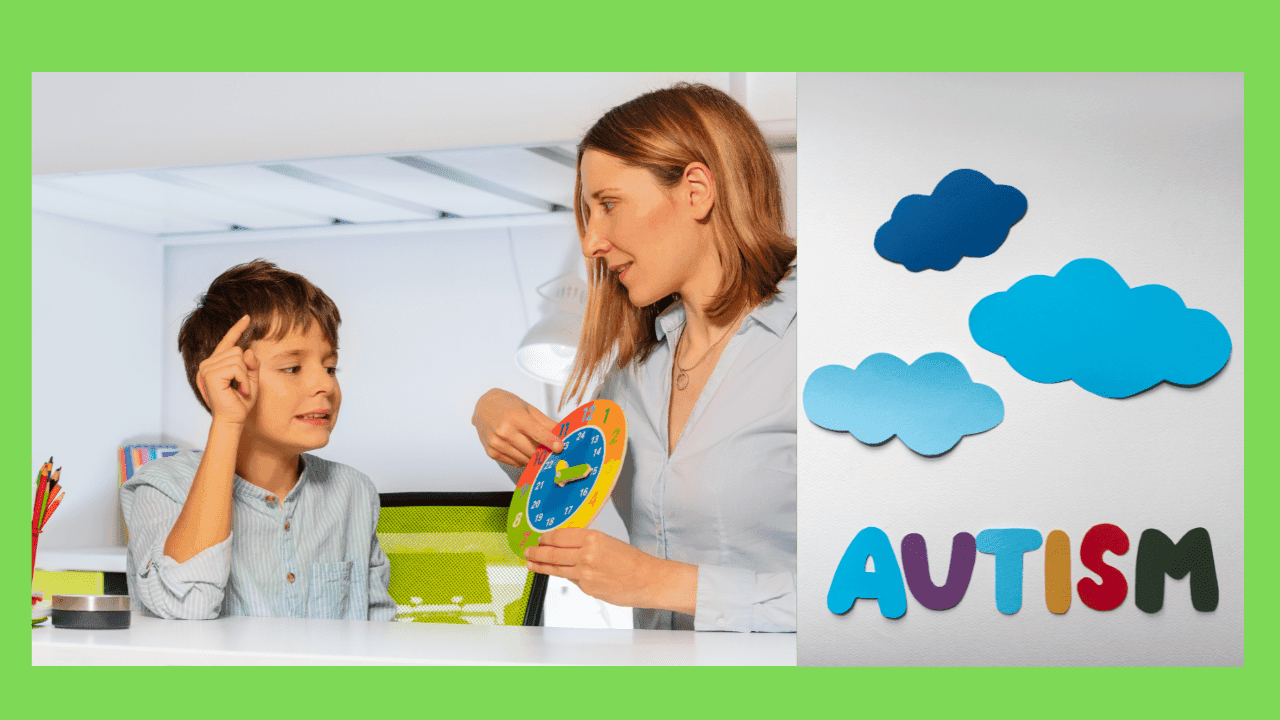Here’s an overview:
Introduction to Autism Spectrum Disorder (ASD)
Autism Spectrum Disorder (ASD) is a complex neurodevelopmental condition characterized by challenges in social interaction, communication, and repetitive behaviors. The severity and manifestation of symptoms can vary widely among individuals.
- Social Interaction: Difficulty understanding social cues, forming relationships, and expressing emotions.
- Communication: Delayed speech development, limited use of gestures, or non-verbal communication.
- Repetitive Behaviors: Restricted interests, repetitive movements, and insistence on routines.
ASD can be identified early in children, often before the age of three. Early detection and intervention are crucial for improving outcomes and supporting developmental progress.
Understanding Autism Screening
Autism screening is a crucial step in identifying developmental delays in children. It involves:
- Use of standardized tools and questionnaires.
- Information gathering from parents and caregivers.
- Observations of the child’s behavior.
Pediatricians utilize tools like the M-CHAT-R/F (Modified Checklist for Autism in Toddlers, Revised with Follow-Up).
Screening typically occurs at well-child visits at 18 months and again at 24 months.
- Early detection can lead to interventions.
- Screening is not diagnostic but identifies the need for further evaluation.
- Involves multidisciplinary teams, including pediatricians, psychologists, and speech-language pathologists.
The Prevalence of Autism in Children
Autism Spectrum Disorder (ASD) affects a significant number of children worldwide. The Centers for Disease Control and Prevention (CDC) estimates that 1 in 54 children in the United States is diagnosed with ASD. This prevalence varies based on factors such as gender, with boys being four times more likely to be diagnosed than girls.
- Geographical Differences: Prevalence rates can vary by country and region.
- Diagnostic Criteria Changes: Modifications in diagnostic criteria can affect prevalence rates.
- Increased Awareness: Greater awareness and better screening methods contribute to higher reported prevalence.
Understanding these trends is crucial for improving early detection and intervention efforts.
Key Early Signs of Autism to Look For
- Delayed Speech and Language Skills: Children may not speak by 16 months or have very limited vocabulary.
- Limited Eye Contact: Lack of eye contact during interactions.
- Repetitive Behaviors: Engaging in repetitive motions like hand-flapping or rocking.
- Restricted Interests: Unusual focus on specific topics or objects.
- Social Interaction Challenges: Difficulty understanding social cues or engaging in typical play activities.
- Sensory Sensitivities: Overreacting or underreacting to sensory stimuli like sounds or textures.
- Non-Verbal Communication: Limited use of gestures such as pointing or waving.
Age-Appropriate Screening Methods
Infants and Toddlers (0-3 years)
- Developmental Milestones: Regular monitoring using checklists and parent questionnaires.
- Surveillance: Continuous assessments during routine pediatric visits.
Preschool Children (3-5 years)
- Screening Tools: Use of tools like M-CHAT-R/F (Modified Checklist for Autism in Toddlers, Revised with Follow-Up).
- Observations: Structured play and social interaction analyses.
School-Aged Children (5+ years)
- Behavioral Evaluations: Observations in different settings such as home and school.
- Standardized Tests: Use of tests like ADOS-2 (Autism Diagnostic Observation Schedule, Second Edition) and ASRS (Autism Spectrum Rating Scales).
The Role of Pediatricians and Healthcare Providers
Pediatricians and healthcare providers play a critical role in the early detection of autism in children. Responsibilities include:
- Conducting regular developmental screenings during well-child visits.
- Utilizing standardized tools like the Modified Checklist for Autism in Toddlers, Revised (M-CHAT-R).
- Providing guidance and information to parents about developmental milestones.
- Referring children for further evaluation if early signs of autism are observed.
- Collaborating with specialists such as developmental pediatricians, child psychologists, and speech therapists.
- Offering support services and resources to families.
- Maintaining up-to-date knowledge on autism screening guidelines and best practices.
Effective early intervention can make a significant impact.
Parental Observations and Their Importance
Parental observations play a crucial role in the early identification of autism spectrum disorders (ASD). Parents are usually the first to notice unusual behaviors in their children. Key observations may include:
- Lack of eye contact.
- Delayed speech development.
- Repetitive behaviors.
- Resistance to changes in routine.
- Limited interests in activities.
Parents’ insights provide valuable context for healthcare providers, aiding in accurate and timely diagnosis. The continuous monitoring of developmental milestones and noting any deviations can significantly impact the effectiveness of early intervention strategies. Identifying red flags early allows for prompt action, improving long-term outcomes for children with ASD.
The Benefits of Early Detection
Early detection of autism spectrum disorder (ASD) offers numerous advantages, including:
- Early Intervention: Access to interventions such as speech, occupational, and behavioral therapies.
- Improved Outcomes: Children who receive early treatment often achieve better long-term communication and social skills.
- Educational Support: Tailored educational plans can be developed to meet each child’s unique needs.
- Parental Guidance: Parents gain insights and strategies to support their child’s development more effectively.
- Reduced Stress: Early diagnosis reduces uncertainty and stress for families by providing answers and a clear path forward.
Early detection is crucial for maximizing potential benefits.
Clinical Screening for Autism Spectrum Disorder
Challenges in Autism Screening
Screening for autism in children presents several challenges:
- Variability in Symptoms: Autism spectrum disorder (ASD) symptoms vary widely, making it difficult to identify a universal set of markers.
- Early Detection: Symptoms may not be apparent until later in development, delaying diagnosis.
- Cultural Differences: Cultural backgrounds influence the recognition of developmental milestones and behaviors.
- Limited Resources: Access to specialists and screening tools is often restricted, especially in rural or underserved areas.
- Parental Awareness: Lack of awareness and understanding about autism can delay screening and intervention efforts.
- Stigma: Social stigma associated with developmental disorders can deter families from seeking screening.
Access to Resources and Support After Diagnosis
Once a child is diagnosed with autism, families gain access to various essential resources and support systems. These resources aid in developing tailored intervention plans and providing necessary therapies. Key areas include:
- Therapeutic Interventions:
- Applied Behavior Analysis (ABA)
- Speech Therapy
- Occupational Therapy
- Educational Support:
- Individualized Education Programs (IEPs)
- Special Education Services
- Community Resources:
- Support Groups
- Respite Care
- Local Autism Organizations
Utilizing these resources can significantly improve the child’s development and quality of life. Support networks also offer critical assistance to families navigating the complexities of autism.
Current Guidelines and Recommendations for Screening
Healthcare professionals are encouraged to follow established autism screening protocols. Key guidelines include:
- American Academy of Pediatrics (AAP): Recommends screening all children at 18 and 24 months.
- U.S. Preventive Services Task Force (USPSTF): Advocates for early screening for all children, regardless of risk indicators.
- Developmental Screening Tools: The Modified Checklist for Autism in Toddlers (M-CHAT) is widely used.
- Referral Process: Children identified with potential signs should be referred to specialists for comprehensive evaluation.
- Parental Involvement: Parents should monitor developmental milestones and report concerns to healthcare providers.
The Impact of Cultural and Societal Factors on Screening
Cultural beliefs and societal attitudes significantly influence autism screening. Various cultures perceive developmental disabilities differently. Some may view early intervention positively, while others might consider it unnecessary. Societal stigma surrounding autism in certain communities can deter parents from seeking early screening. Language barriers and lack of culturally sensitive screening tools can also hinder effective diagnosis. Additionally, access to healthcare services varies widely, affecting the consistency of screenings. Economic factors play a role; families with lower socioeconomic status often face more challenges in accessing healthcare. Understanding these factors is crucial in creating comprehensive, equitable screening programs.
Case Studies: Real-Life Experiences with Early Autism Screening
Case Study 1: Identifying Subtle Signs
Dr. Samantha Brown observed subtle social delays in 18-month-old twins during a routine check-up. She recommended early autism screening, leading to an early diagnosis. The children began tailored interventions, drastically improving their social skills by age three.
Case Study 2: Parental Vigilance
At age two, Anna’s parents noticed her limited eye contact and repetitive behaviors. They sought professional advice, leading to an early autism diagnosis. Early intervention services helped Anna develop crucial communication and social interaction skills.
Case Study 3: School-Based Screening
A preschool teacher observed 3-year-old Liam’s difficulty with transitions and recommended a screening. The screening identified autism, allowing Liam to receive essential support within the school system, improving his learning and social interactions.
Future Directions in Autism Research and Screening
Future research in autism aims to explore genetic, environmental, and neurological factors influencing autism spectrum disorder (ASD). Advanced neuroimaging techniques will enhance understanding of brain development in ASD. Biomarker identification will enable earlier and more accurate screening methods. Artificial intelligence and machine learning can improve diagnostic tools and personalized interventions. Longitudinal studies will provide insights into the progression of ASD across different life stages. Multi-disciplinary collaboration will be crucial in integrating diverse fields to create comprehensive care strategies. Ethical considerations in genetic research and data privacy remain paramount as technologies evolve.
Conclusion: Building Awareness and Supportive Networks
Creating awareness of autism and the importance of early screening is crucial for timely intervention. Educators, healthcare professionals, and parents play significant roles in recognizing early signs.
- Educators can receive training to identify signs of autism in classroom settings.
- Healthcare professionals should stay informed about updated screening tools and techniques.
- Parents can connect with support groups to share experiences and resources.
Developing a supportive network is essential for children with autism. Collaboration among these groups ensures that children receive the necessary support to thrive. Reliable communication and resource sharing are pivotal.

